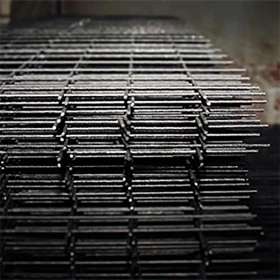Dec . 01, 2024 22:35 Back to list
building a welded wire fence
Building a Welded Wire Fence A Comprehensive Guide
Building a welded wire fence is a practical solution for a variety of needs, from containing livestock to creating a garden enclosure. This durable fencing option is known for its strength and longevity, making it a popular choice among homeowners and farmers alike. In this article, we'll explore the steps involved in constructing a welded wire fence, key materials needed, and some tips for ensuring a successful installation.
Choosing the Right Materials
Before diving into the construction process, it's essential to select the right materials for your welded wire fence. The primary component is the welded wire itself, which comes in various heights, widths, and wire gauge options. A common choice for livestock fencing is 4 or 5-foot high welded wire with a 2-inch by 4-inch mesh. The strength of the wire is also critical; a thicker gauge usually indicates greater durability.
In addition to the welded wire, you will need fence posts, which can be made of wood, metal, or vinyl. Wooden posts are economical and easy to work with, while metal posts provide added durability and resistance to weather conditions. The spacing of the posts typically ranges from 6 to 10 feet apart, depending on the height of the fence and the terrain. Finally, you'll need staples or wire ties for securing the welded wire to the posts and possibly some concrete to stabilize the posts further.
Planning the Layout
Once you have your materials ready, it's time to plan the layout of your fence. Begin by marking the corners of the area you want to enclose. Use stakes and string to outline the perimeter of the fence, making sure it is as straight as possible. It's crucial to consider the terrain; if you are building on a slope, you might need to adjust the height of the fence or use additional posts for support.
Installing Fence Posts
With the layout marked, the next step is to install the fence posts. Start by digging holes for the posts, making sure each hole is deep enough to support the height of the post and provide stability—typically, this should be about one-third of the post's total length. Place the post in the hole, ensuring that it is level and straight. If using wooden posts, you may want to treat them with a wood preservative to prolong their lifespan. Then, fill the hole with dirt or concrete, compacting it as you go.
building a welded wire fence

Attaching the Welded Wire
Once the posts are securely in place, it’s time to attach the welded wire. Roll out the welded wire along the length of the fence, ensuring the bottom of the wire is just above ground level if you’re fencing livestock. Raise it a little higher if you’re enclosing a garden to avoid damage from soil.
Use staples or wire ties to secure the welded wire to the fence posts. Start at one end, ensuring the wire is tightly pulled before fastening it to subsequent posts. For added protection, consider burying the bottom of the wire slightly underground or using smaller fencing material to prevent animals from digging under the fence.
Finishing Touches
After attaching the welded wire, inspect the entire fence for any gaps or weaknesses. This is especially important at the corners and where two sections of wire meet. Make any necessary adjustments or add additional fastening points to ensure the integrity of your fence.
Finally, you might want to add a gate for easy access to the enclosed area. Gates can be purchased pre-made or constructed using the same materials as the rest of the fence.
Conclusion
Building a welded wire fence can seem daunting, but with proper planning and the right materials, it can be a rewarding project that enhances your property’s functionality and aesthetics. Whether protecting your garden or keeping livestock secure, a well-constructed welded wire fence is sure to stand the test of time. Happy fencing!
-
Reinforcing Mesh: Core Material of the Construction Industry
NewsJul.07,2025
-
Welded Wire Fabric Reinvented for Modern Projects
NewsJul.04,2025
-
Superiority of Stainless Steel Woven Mesh
NewsJul.04,2025
-
Key Types of Razor Wire and Their Applications
NewsJul.04,2025
-
Durable Metal Fence Types for Security
NewsJul.04,2025
-
Best Materials for Livestock Fence
NewsJul.04,2025
products.







